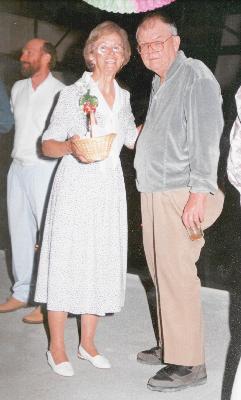


From Victor Blanco: "Olin joined the CTIO staff in the seventies, after the AURA Board when considering the youth of most CTIO scientific staff members recommended recruitment of a senior astronomer. Olin had been the director of the Australian National University Mt. Stromlo and Siding Springs Observatory and was familiar with CTIO after spending a sabbatical with us. Olin is well known world wide to astronomers as one of the authors of what probably is one of the foremost, often quoted seminal papers of the last fifty years, namely the Eggen, Lynden Bell and Sandage ApJ 136 paper of 1962 theorizing how the distribution of stellar populations in our galaxy indicates the way our galaxy evolved. Olin, as far as I know, is the only AURA scientist asked to deliver the American Astronomical Society's most distinguished lecture, i.e., the Russell. Also, as far as I know, he is the only AURA scientist ever asked to contribute the autobiographical and philosophical notes presented in the first pages of the Annual Reviews of Astronomy and Astrophysics.
Olin was mainly an observational astronomer, and his specialty is stellar photometry. While at CTIO, most of his observations were made with the 1.5m telescope. Well known are his studies of so-called "moving clusters" which are stellar groups whose members rarely show obvious clustering in the sky, but which have a common motion in space. The Hyades and the Pleiades are nuclei of two such groups. While at CTIO, Olin did much to achieve good relations with Chilean astronomers, and was locally well known among our technicians and administration staff for his kindness."


This picture here was taken at the retirement party for Juanita Munoz (left), the longtime secretary to the CTIO Director and one of Olin's (right) closest friends.
Remembrance from Lisa Wells: I can remember working on a holiday at CTIO in Chile when Olin came walking down the hall wondering where everyone was. When I told him that it was a holiday, his response was, "What has the Blessed Virgin done this time?"

Remembrance from Doug Geisler: When we were bringing home our first baby from the hospital, my wife and I decided to stop by the office to show her off. This caused quite a scene in the reception area with many people cooing, complementing, and congratulating us. Olin hearing the noise walked in and upon seeing the baby said, "Whats that?"

Remembrance from George E. Stewart: I am editor and publisher of the Orfordville Journal and Footville News -- growing up just three houses from Olin, his brother Glen, sister Mary and his father and mother -- Olin and Bertha. Many hours were spent with the family, from breakfast, to late night study of the stars. My father had purchased a 60 power telescope -- a long cardboard tube with lenses in each end. Olin would come down to my home, and we would set the telescope up in my back yard which had a beautiful view of much of the night sky. He would talk to me of the stars, their names and clusters. After I went up to bed, he would stay at the telescope, drawing star maps in a small 5-cent notebook. This book resided in the end of the tube the telescope was kept in for many years, but was lost when my son became interested in the stars many years later. It would be a wonderful memory of him if it could have been preserved.

Here's the data from Christian Nitschelm's book has on Eggen's Nearby Star. Another designation for it is CD -31 622. Its year 2000 coordinates are RA= 01 32 20.0 DEC= -30 40 49, so it's in the constellation of Sculptor. It's a subdwarf of type G8. From Stephen Mendenhall

Check out the Memorial page at NOAO.

heck out also the following Memorial page at BAAS
